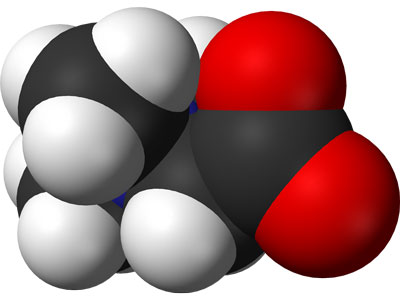科学家发现甜菜碱杀虫机制
来源:《Nature Neuroscience》
作者:Aude S Peden等
时间:2013-11-29

日前,来自犹他大学等机构的科学家在《自然-神经科学》上报告称,他们发现出了海草中一种抗虫剂甜菜碱杀死线虫的工作机制。这将有助于为开发新药物分子以克服寄生虫逐渐增加的多重抗药性提供线索。
很久以前,农民就开始使用海草作为一种天然杀虫剂来保护种植物和家畜,但为什么海草具有良好杀虫效果的原因却一直未知。近期多项研究发现海草中的甜菜碱能够抑制线虫幼虫生长,但这种杀虫效果所针对的分子目标和通路仍不清楚。
在这项中,科学家将线虫暴露在甜菜碱中进行研究发现线虫体内的调节甜菜碱作用的两种蛋白发生了突变。其中一种蛋白名为 SNF-3,负责在细胞中运输甜菜碱。当 SNF-3 发生突变时,线虫会高度收缩无法动弹,原因可能是由于线虫细胞无法清除甜菜碱。
而另一种蛋白名为 ACR-23,属于甜菜碱受体,当它发生突变时,线虫则不会受到甜菜碱毒性影响,甚至还能防止 SNF-3 发生突变的线虫变得无法动弹。ACR-23 是在刺激运动的神经元中获得表达的,这解释了为什么通过甜菜碱正常激活 ACR-23 的方式可以导致线虫高度收缩无法动弹并最终死亡。研究人员因此确定了甜菜碱抗虫效果的一种可行机制。(引自:生物谷360 http://www.bio360.net/news/show/8037.html)
Betaine acts on a ligand-gated ion channel in the nervous system
of the nematodeC. elegans
Abstract Prior to the advent of synthetic nematocides, natural products such as seaweed were used to control nematode infestations. The nematocidal agent in seaweed is betaine, an amino acid that functions as an osmolyte and methyl donor. However, the molecular mechanisms of betaine toxicity are unknown. We identified the betaine transporter SNF-3 and the betaine receptor ACR-23 in the nematode C. elegans. Mutating snf-3 in a sensitized background caused the worms to be hypercontracted and paralyzed, presumably as a result of excess extracellular betaine. These behavioral defects were suppressed by mutations in acr-23, which encodes a ligand-gated cation channel of the cys-loop family. ACR-23 was activated by betaine and functioned in the mechanosensory neurons to maintain basal levels of locomotion. However, overactivation of the receptor by excess betaine or by the allosteric modulator monepantel resulted in hypercontraction and death of the nematode. Thus, monepantel targets a betaine signaling pathway in nematodes.
原文链接:http://www.nature.com/neuro/journal/v16/n12/full/nn.3575.html




